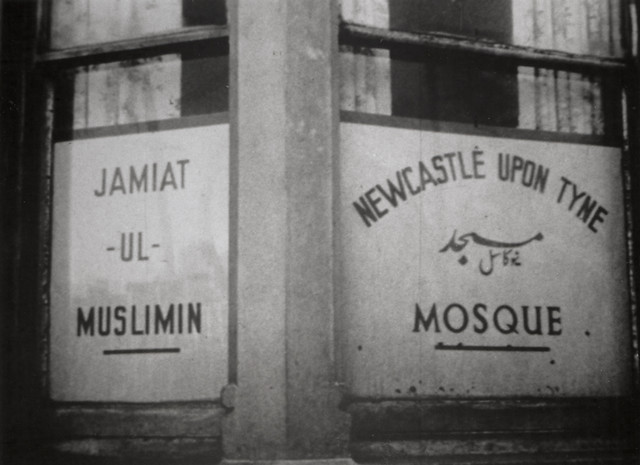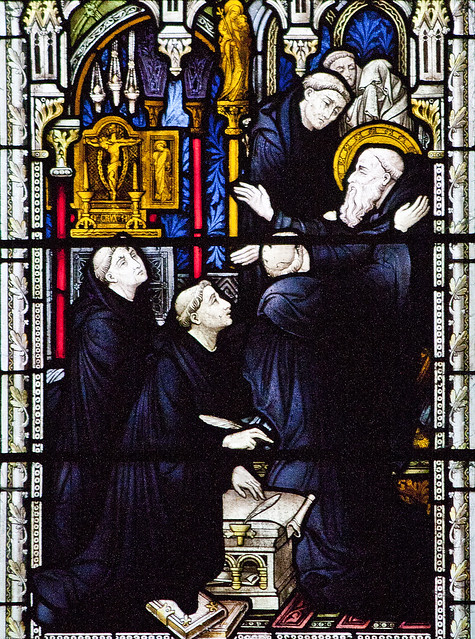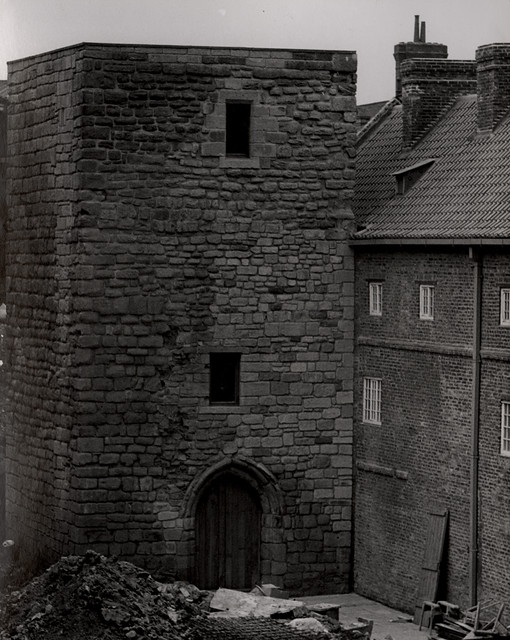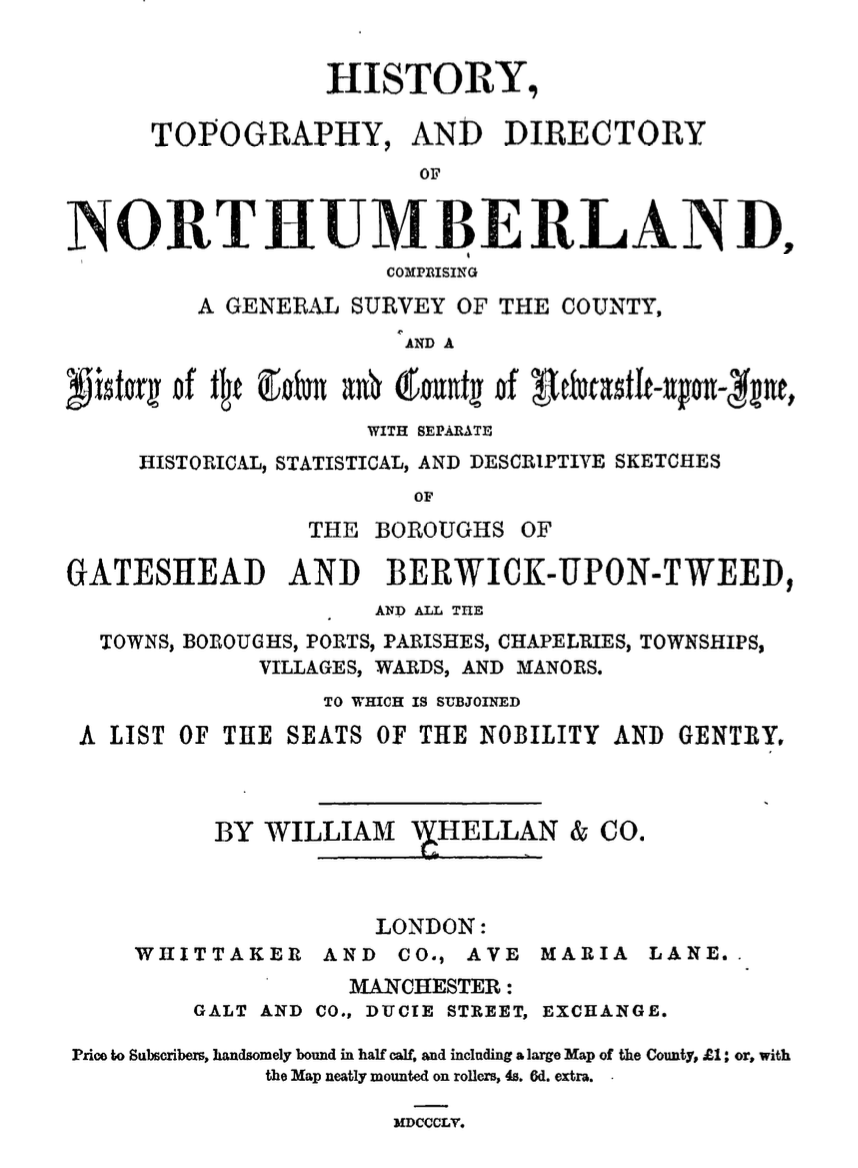Topics > Religion > Christian Heritage > Austin Friars, Newcastle
Austin Friars, Newcastle
Extract from: A Descriptive and Historical Account of the Town and County of Newcastle Upon Tyne: Including the Borough of Gateshead... Eneas Mackenzie, 1827.
THE AUGUSTINE FRIARS
These religious, who were also named Austin Friars, were originally hermits, whom Pope Alexander IV first congregated into one body, under General Lanfranc, in 1256. They were clothed in black, and observed the rule of St. Augustine. This order of Mendicants first appeared in England about the year 1250. It has not been fully ascertained at what time they settled in Newcastle; though it is generally supposed that this house was founded by William Lord Ros, Baron of Wark upon Tweed, about the year 1290; for in 1291, king Edward I. granted a licence to John de Capella, to assign a messuage to the prior and brethren of this convent. When the king passed through Newcastle, in December, 1299, the brethren of this house received 3s. 4d. for a pittance of one day.
In 1306, the king granted a license of mortmain to Bartholomew Patun and Catherine his wife, to assign to the friars of St. Austin, of Newcastle, a certain place contiguous to their convent, 200 feet in length and 24 feet in breadth, for the purpose of enlarging their burial-ground. Three years after this, the brethren of this house obtained a royal patent, confirming a grant of land lying in Cow Gate (i. e, Manor Chare) by William Ros; and at the same time, Edward II. granted some messuages in Newcastle, late parcel of the possessions of Robert de Middleton, who had been attainted, for the enlargement of this convent.
In 1322, the king's almoner paid 8s. twice to the brethren of this house, for their pittance of one day; and in the following year, they procured a grant of a piece of ground contiguous to their convent, 160 feet in length and 28 feet in breadth, to be procured of John Denton. In 1331, king Edward III. granted a license of mortmain to Adam de Colwell, chaplain, to assign three roods and a half adjoining this convent to the prior and brethren thereof; with a proviso, that a sufficient space should be left between this house and the town wall for the mayor and community to ride in, for the custody and defence of the town. This land was held of the king, and paid three halfpence for all service.
A writ of king Richard II. directed to the bailiffs of Newcastle upon Tyne, and issued by this convent, orders them to make proclamation to prevent the casting of filth into rivers, ditches, streets, &c.; several persons having thrown excrements, filth, and garbage, in a certain way that led near to the house of the Austin Friars, to their great annoyance and peril.
On July 24 and 25, 1503, the princess Margaret, eldest daughter of king Henry VII. was entertained at this house, when on her journey to the court of Scotland. In 1539, it was surrendered by Andrew Kel, prior, with seven brethren and three novices.
These premises, in 1540, seem to have been reserved to the use of the king, for the residence of his council of the north. Grey says, "The kings of Northumberland were buried here; and the place, in succeeding ages, has been inlarged and beautified with stately buildings, cloysters, and a faire church. The kings of England since kept house in it when they came with an army royall against Scotland; and since the suppression of the monastries made a magazine and storehouse for the north parts. Now of late that princely fabrick demolished and layd levell with the ground." In Leland's time, "it had three or four faire towers belonging to it."
It appears, from the Aubone MS. that the house of Austin Friars was granted, in 1551, to John Duke of Northumberland, "as parcel of Tynemouth Monastry." But, in 1553, Richard Benson occurs as keeper of this house under the crown, with a fee of 40s. per annum; and in Speed's plan of Newcastle, 1610, it is designated as "the King's Manour." Bourne, quoting the Milbank MS. says, "A Scot did beg it of king James (the First); after that took the lead off it and sold it; but it was cast away before it came to its market. He sold also some stones to Sir Peter Riddel, who with them built the south end of his fine house; but now it belongs to Captain Dykes, and his posterity has no right." It was in the possession of the corporation in 1648, when the common council granted a part of its scite to the Barber Surgeons, to build a meeting-house on. Pike and gun exercise was performed here by the townsmen, in a part called the artillery ground. The House of Correction, a tallow house for the Butcher's Company, the Hospital of Jesus, Blackett's Hospital, the Hospital of the two Davison's, the charity-school of All Saints, a work-house, and various other buildings, have been erected within its limits.
In turning up from the Manor Chare to where the New Prisons now stand, there was, in Bourne's time, "the remains of a large gate, which had been one of the gates leading to St. Austin Fryers, which having passed the gate is a little above on the right hand. - There is still," this writer continues, "a compleat quadrangle to be seen, the south side of which has undoubtedly been the chapel." An ancient arch, in a good state of preservation, remains in a corner of an apartment on the same side of the square. The old massive walls of the monastry may be distinguished on the east side, where a large arched gateway stood about 20 years ago. On the north side, and near the hall, or common eating-room, there is still the entrance into some kind of a crypt or arched passage. Brand says that, about 50 years before he wrote, the old windows were taken out of the general hospital, which, he says, "had formed, it should seem, one of the quadrangles of the convent." The ground between this quadrangle and the town wall has been the burying-ground of the monastry; for, in digging a saw-pit a few years ago, great quantities of human bones were found. The works of the Newcastle Gas Company have been erected on this place. The ground now occupied by the hospitals, and the Barber Surgeon's Company, is supposed to have been the gardens of the convent.










